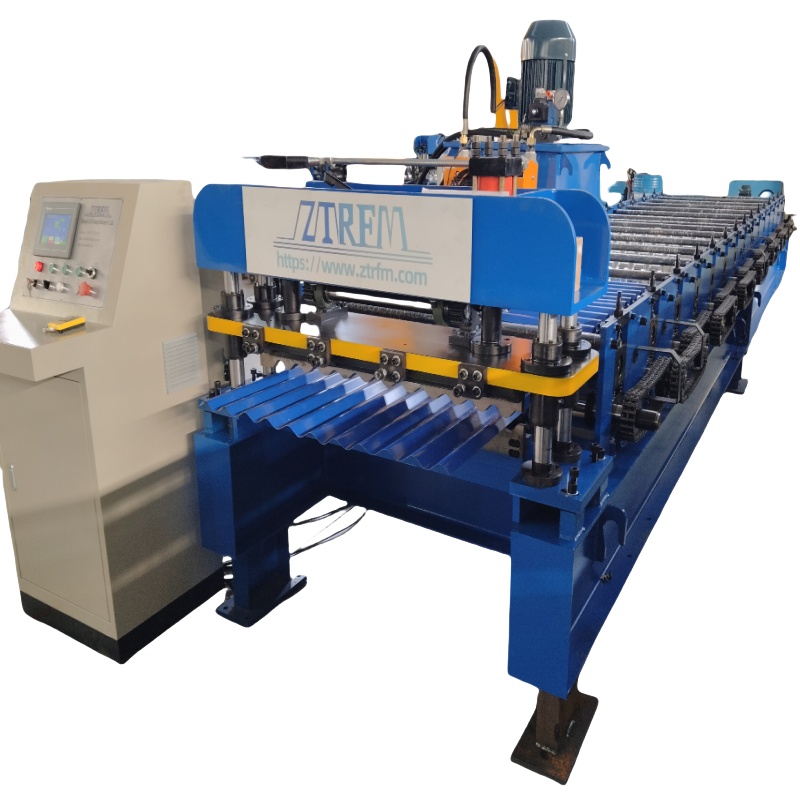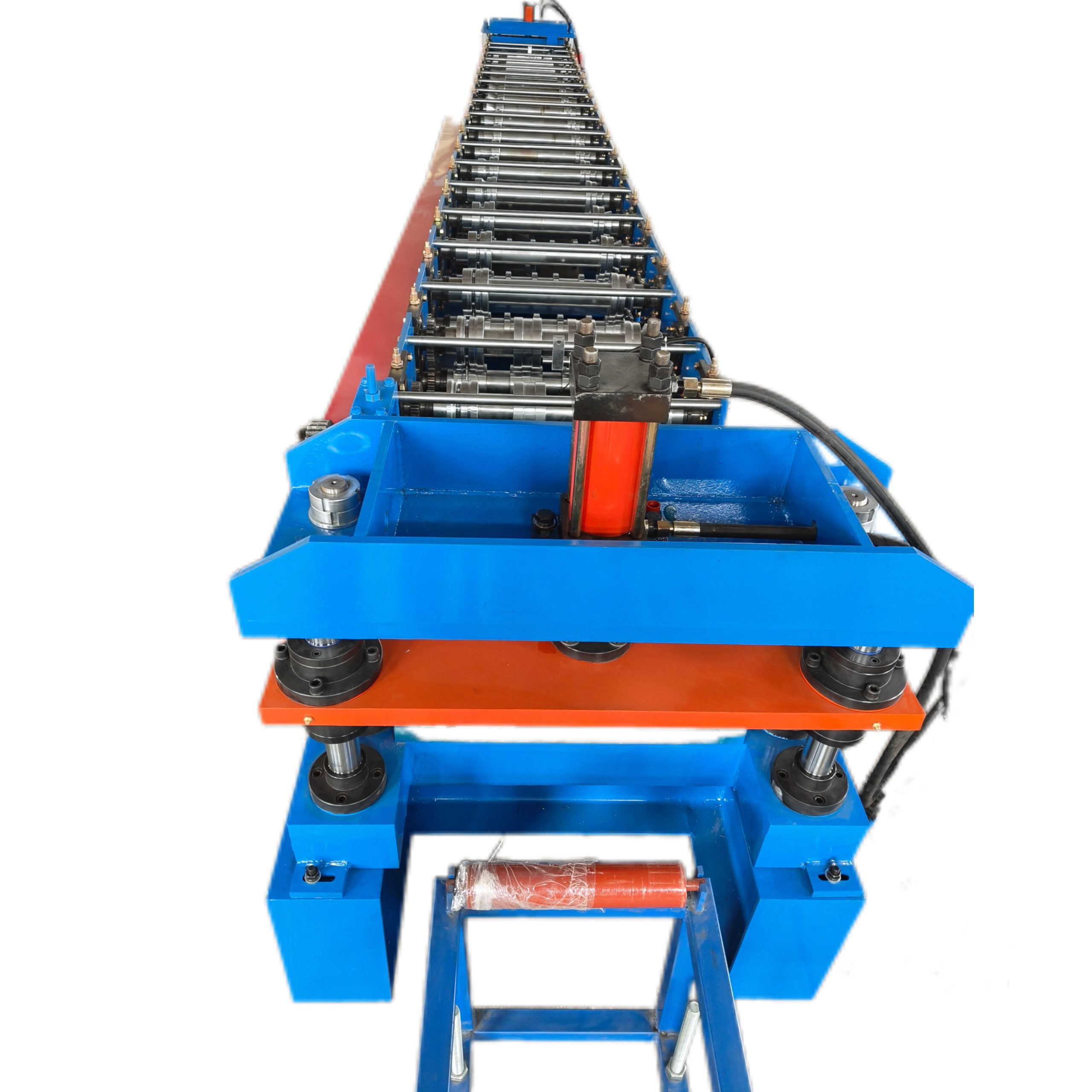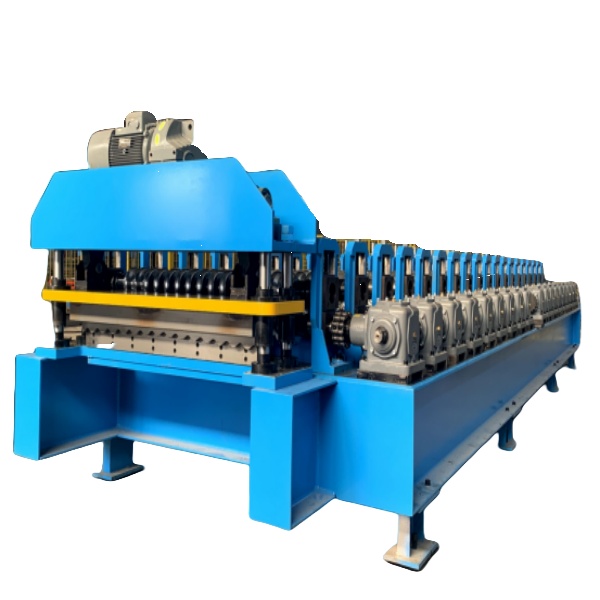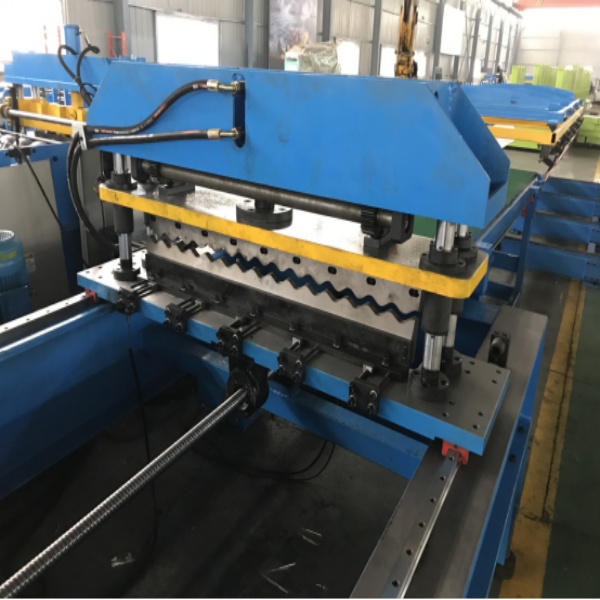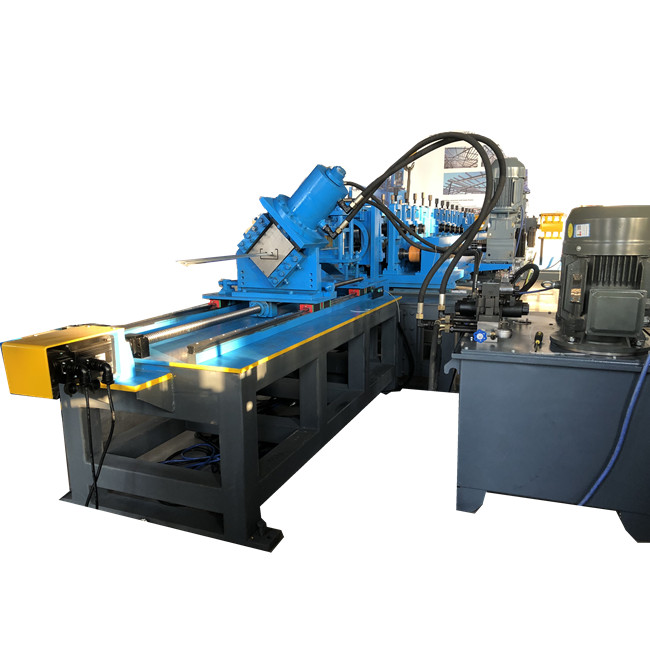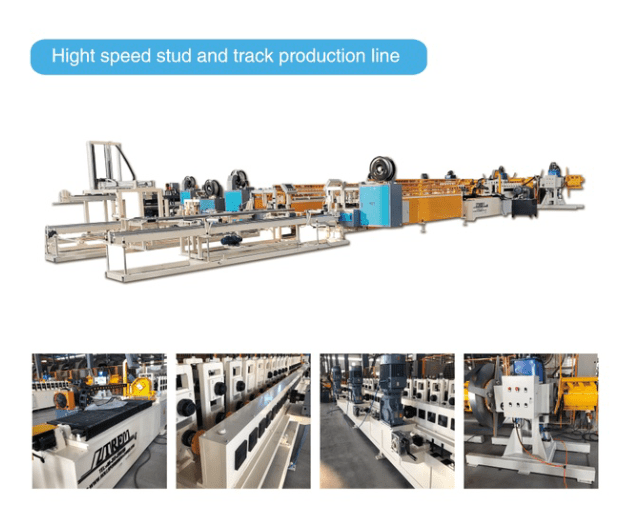Single-Leg Resilient Channel rolling forming machine is designed to make the resilient channels for drywall in batch fully automatically. As to resilient channels, they are used for the fastening to framing. Normally use is a type S pan-head screw, with a 3/8”minimum length. For wood framing, use type-S or type-W screws (not nails) with 1-1/4” length. NOTE: Be aware that long screws in wood framing can loosen when wood dries out and shrinks. Make sure to use only 1-1/4” or 1-1/2”long fasteners in wood -or better yet, use steel framing! Here in one installation pictures for your reference:
Single-Leg Resilient Channel drawing profile for your reference:
Single-Leg Resilient Channel rolling forming machine:
The Single-Leg Resilient Channel rolling forming machine is composed by the following elements: double head decoiler, rotary punching , main rolling forming machine with shearing system, receiving table and the package system. By those elements, the machine working speed with punching can reach 70 meter per minute.
- Double head decoiler can help you add the coil fast as the machine working speed is very fast.
- The leveling machine can remove the curving degree of the coil from decoiler and then do the punching part.
- The rotary punching can do the working at the speed of 120 meter per minute.
- The main rolling forming machine we design using the servo tracking shearing system, molding frame and high accuracy processing to make sure the machine working in a high speed and meanwhile working steady.
As to the fully automatic package machine it is optional. It can help you do the package automatically.
Where to use of the Single-Leg Resilient Channel
Resilient channel was initially developed as a spacer in walls: where a transition needed to be made from single-layer ½-inch gypsum to double layer gypsum. The discovery that the channel provided better acoustical values was a welcome surprise to the makers of RC, and since then, manufacturers have developed various configurations of RC to maintain and improve acoustical performance. A few years ago, installation of RC was added to ASTM C754, which includes the following provisions:
Mounting flange (1/2” wide) goes down, face flange (1-1/4” wide) goes up. Exception: first row closest to the floor may be inverted.
The first (lowest) row of resilient channel shall be not more than 2” off the floor (as measured from the floor to the center of the face of the resilient channel).
The highest row of resilient channel shall be not more than 6” from the ceiling (as measured from the ceiling to the center of the face of the resilient channel).
Holes or slots in the web (sloped face) of the resilient channel should be centered over the supporting framing members.
Pre-punched holes in the narrow flange should be used for the screws attaching the RC to the studs.
Gypsum panel products shall be attached to the resilient furring channel using screws and ensuring that the screw does not touch the studs.

Single-Leg Resilient Channel rolling forming machine working video for your reference:



